What Are DOC-M Packs?
DOC-M Packs are an amalgamation of specifically chosen products designed to make washroom spaces accessible and user-friendly for people with disabilities. These packs are meticulously put together to ensure compliance with building regulations and standards for accessibility, such as the UK's Document M of the Building Regulations, from which the term "DOC-M" is derived. This legislation outlines the minimum requirements for the access and use of buildings by individuals, including provisions for disabled people.
The essence of DOC-M Packs lies in their comprehensive nature. They are not just a collection of randomly accessible bathroom fixtures; each component is selected to provide a cohesive, accessible washroom solution. The aim is to eliminate barriers that individuals with disabilities might face when using standard washroom facilities, thereby fostering an inclusive environment in public and commercial spaces.
The Components of a DOC-M Pack
A DOC-M Pack typically includes several key components designed to make washrooms more accessible:
Grab Rails: These are crucial for support and stability. Installed at strategic points, grab rails assist individuals with mobility impairments in moving around and using the washroom facilities safely.
Shower Seats: For washrooms equipped with showers, a foldable or fixed shower seat is essential. It provides a safe and comfortable option for individuals who find standing for extended periods challenging.
Accessible Toilets: These are designed with the right height and projection to accommodate wheelchair users, making it easier for them to transfer from a wheelchair to the toilet seat.
Basins: Accessible basins are installed at a specific height and are often shallower than standard ones, allowing for easy use from a seated position.
Lever-operated Taps: These taps can be operated with minimal effort and do not require fine motor skills, making them suitable for individuals with various types of disabilities.
The variety within DOC-M Packs allows for customisation based on specific needs and space limitations. Whether it's for showers, toilets, or ambulant cubicles, there's a configuration that ensures accessibility for all users.
Variations in Shower Packs
When it comes to DOC-M Shower Packs, the choice between concealed and exposed valve showers is significant. Concealed valve showers offer a sleek, minimalistic look with plumbing hidden behind the wall, which can be beneficial in reducing clutter and making the space more navigable for someone with a disability. On the other hand, exposed valve showers are easier to install and maintain, as all components are accessible. The choice between the two often depends on the specific needs of the users, as well as the design and layout of the washroom.
The Importance of DOC-M Packs
The significance of DOC-M Packs extends beyond mere compliance with legal standards. They embody a commitment to inclusivity and accessibility, ensuring that individuals with disabilities can use washroom facilities with dignity and independence. By implementing these comprehensive solutions, businesses and public entities can make a clear statement about their values and their dedication to serving all members of the community.
Furthermore, DOC-M Packs are a testament to how thoughtful design and planning can make a profound difference in people's lives. They are a key element in creating spaces that do not discriminate or exclude but instead welcome everyone with open arms. As our society continues to move towards greater inclusivity, the role of DOC-M Packs in public and commercial washrooms will only grow in importance.
Why Do DOC-M Packs Exist?
The inception of DOC-M Packs is rooted deeply in both historical context and legislative evolution, aimed at redressing past oversights in building design and ensuring inclusivity in public and commercial spaces. Historically, architectural design has rarely accommodated the needs of individuals with disabilities, leading to a societal shift and the introduction of legislation to correct these inequalities.
The development and requirement of DOC-M Packs stem from a growing recognition of the importance of promoting equality and accessibility. These comprehensive solutions are a direct response to legislative measures designed to ensure that individuals with disabilities can access and use washroom facilities safely and comfortably. By adhering to these guidelines, DOC-M Packs play a pivotal role in transforming public and commercial spaces into environments where everyone, regardless of physical ability, is afforded dignity and independence.
The Importance of Compliance
DOC-M Packs are designed to meet specific building regulations and standards, including BS 8300-2:2018 and Document M of the Building Regulations. BS 8300-2:2018 sets out best practices for the design of an accessible and inclusive environment, detailing the requirements for various features within washroom facilities to accommodate users with a range of disabilities. Document M of the Building Regulations, on the other hand, provides the legal framework within the UK for accessibility in building design and construction, ensuring that buildings are accessible and usable.
The importance of complying with these standards cannot be overstated. Beyond legal obligations, they represent a commitment to ethical practices and the promotion of equality. By incorporating DOC-M Packs into their facilities, organisations not only adhere to these regulations but also demonstrate their dedication to creating a welcoming and inclusive environment for all users.
Installation Considerations
The planning and installation process of DOC-M Packs is crucial to ensuring both compliance and functionality. Installation considerations must take into account the positioning and arrangement of components to cater effectively to different types of disabilities. This includes the strategic placement of grab rails, the appropriate height of toilets and basins, and ensuring that shower seats and other elements are positioned to maximise safety and comfort for users.
Accessibility requirements vary greatly among individuals, making it essential to approach installation with flexibility and an understanding of the diverse needs of users. Professionals involved in the installation of DOC-M Packs must be well-versed in the applicable regulations and standards, ensuring that the final setup enhances usability and accessibility for everyone.
Customisation and Variability
One of the key strengths of DOC-M Packs is their customisability. Recognising that no two spaces are the same and that the needs of users can be incredibly diverse, these packs offer a range of configurations to fit various washroom sizes, layouts, and specific user needs. This flexibility ensures that facilities can provide accessible washroom solutions that are not only functional but also tailored to the specific context of each location.
Furthermore, DOC-M Packs come in different finishes and designs, allowing for integration into the aesthetic of the washroom without compromising on accessibility. This consideration towards design ensures that accessibility does not come at the expense of style, allowing organisations to maintain a coherent and visually appealing environment while adhering to the highest standards of inclusivity and functionality.
Sector-Specific Applications
DOC-M Packs find their relevance across a wide array of sectors, each with its own unique set of requirements and challenges when it comes to accessibility. From educational institutions and healthcare facilities to hospitality venues and public buildings, the application of DOC-M Packs is both varied and vital.
In education, ensuring that schools and universities are accessible to all students is critical. This not only includes classrooms but extends to washroom facilities as well. DOC-M Packs play a significant role in creating an environment where students with disabilities can enjoy the same level of access and convenience as their peers.
Healthcare facilities, by their very nature, need to be accessible. Hospitals and clinics are frequented by individuals with a wide range of physical abilities, making the comprehensive solutions provided by DOC-M Packs essential for patient washrooms, waiting areas, and even staff facilities.
The hospitality industry, including hotels and restaurants, also benefits from the implementation of DOC-M Packs. Ensuring that washrooms are accessible enhances the customer experience and meets the expectations of guests with disabilities, reflecting positively on the establishment's commitment to inclusivity.
In public buildings, such as libraries, museums, and government offices, accessibility is a key consideration in public service. DOC-M Packs facilitate compliance with legal standards for accessibility, ensuring that these spaces are open and accessible to everyone in the community.
Challenges and Considerations
The selection and installation of DOC-M Packs come with their own set of challenges. One common hurdle is the lack of understanding or awareness of the specific needs that different disabilities entail. This can lead to installations that, while compliant on paper, fall short in practical usability.
Another challenge is the physical constraints of existing spaces. In older buildings, retrofitting bathrooms to accommodate DOC-M Packs can be difficult due to space limitations or structural barriers.
To overcome these challenges, it's advisable to engage with accessibility experts early in the planning process. These specialists can provide invaluable insights into the nuanced needs of individuals with disabilities and offer tailored advice on how to best implement DOC-M Packs within the constraints of a given space. Additionally, thorough planning and consultation with end-users can help identify and address potential issues before they become problematic.
Frequently Asked Questions (FAQs) about DOC-M Packs
What exactly is a DOC-M Pack?
A DOC-M Pack is a comprehensive set of fixtures and fittings designed to make washrooms accessible to individuals with disabilities. These packs comply with specific building regulations and standards, such as Document M of the Building Regulations and BS 8300-2:2018, ensuring that washroom facilities are safe, comfortable, and accessible for everyone.
Who needs to install DOC-M Packs?
DOC-M Packs are essential for any public or commercial building looking to ensure their washroom facilities are accessible. This includes shopping centres, offices, public buildings, schools, and healthcare facilities. Ensuring washroom accessibility is not only a matter of legal compliance but also an ethical consideration towards inclusivity and equality.
Are DOC-M Packs required in all washrooms within a facility?
Not all washrooms within a facility need to be equipped with DOC-M Packs, but it is crucial to have a sufficient number of accessible washrooms to meet the needs of users with disabilities. The specific requirements can vary based on the building's size and the expected number of users.
Can DOC-M Packs be customised?
Yes, one of the key benefits of DOC-M Packs is their customisability. They can be tailored to fit various washroom sizes, layouts, and specific user needs, ensuring that accessibility does not compromise aesthetics. There are also different finishes and designs available to match the overall look and feel of the washroom.
What components are included in a typical DOC-M Pack?
A typical DOC-M Pack includes several key components, such as grab rails, an accessible toilet, a basin at an appropriate height, lever-operated taps, and possibly a shower seat if the pack is designed for shower facilities. The exact components can vary based on the type of pack and the specific requirements of the facility.
How do I know if a DOC-M Pack meets the required standards?
Reputable manufacturers and suppliers of DOC-M Packs will provide detailed information on how their products comply with relevant standards, such as BS 8300-2:2018 and Document M of the Building Regulations. It's important to purchase DOC-M Packs from trusted sources to ensure they meet these compliance requirements.
Is it difficult to install a DOC-M Pack?
Installation of a DOC-M Pack requires careful planning to ensure compliance and functionality. It's advisable to have the installation carried out by professionals who are familiar with the relevant building codes and accessibility standards. Proper installation ensures that the components are positioned and arranged to best meet the needs of users with disabilities.
Do DOC-M Packs cater to all types of disabilities?
DOC-M Packs are designed to accommodate a wide range of disabilities, focusing on providing safe and comfortable access to washroom facilities. However, the specific needs of users can vary greatly, so it's important to consider the individual requirements of users when planning and installing these packs.
Can DOC-M Packs be installed in existing washrooms?
Yes, DOC-M Packs can be installed in both new builds and as part of refurbishment projects in existing washrooms. Installation in existing washrooms may require adjustments to the layout to ensure compliance and functionality.
How do I maintain DOC-M Pack components?
Maintenance of DOC-M Pack components involves regular cleaning and inspection to ensure they remain in good working order. It's important to follow the manufacturer's guidelines for maintenance and to address any issues promptly to maintain the accessibility and safety of the washroom facilities.
In conclusion, we've explored the significance of DOC-M Packs in creating accessible washroom facilities across a variety of sectors. These comprehensive solutions not only ensure compliance with accessibility standards but also reflect a deeper commitment to building an inclusive society.
The importance of DOC-M Packs in achieving this goal cannot be overstated. By facilitating access to washroom facilities, they play a pivotal role in ensuring that individuals with disabilities can participate fully in public and commercial life.
For facility owners and managers, the implementation of DOC-M Packs is a tangible step towards inclusivity. It's an investment in the dignity and independence of all users, demonstrating a commitment to a society where everyone has equal access to facilities.
In closing, let this page serve as an encouragement to consider the adoption of DOC-M Packs. Through careful selection, consultation with experts, and thoughtful installation, we can all contribute to making our spaces more accessible and welcoming for everyone.

 5 Star Rated 2129 reviews
5 Star Rated 2129 reviews
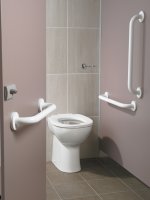
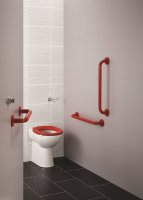

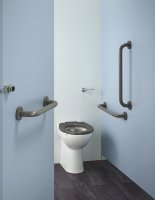
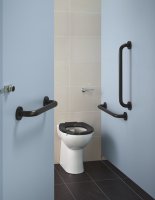
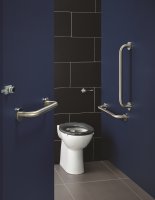
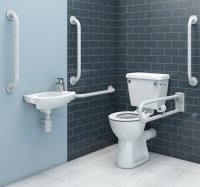
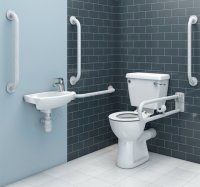
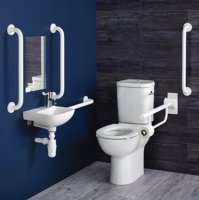
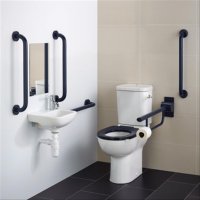

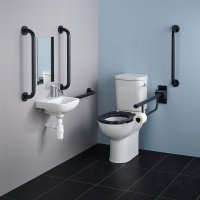



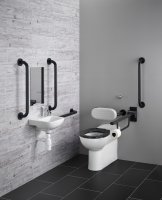




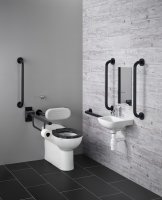

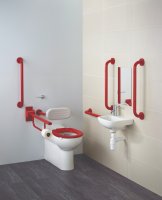
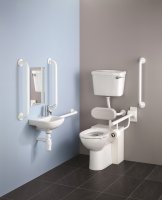
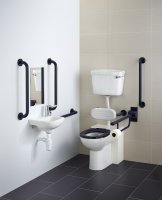

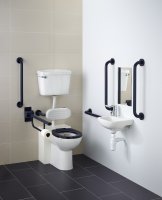
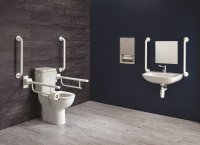


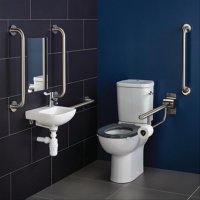
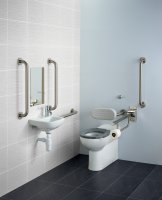
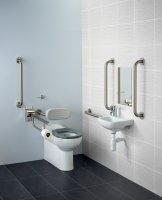

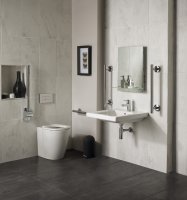
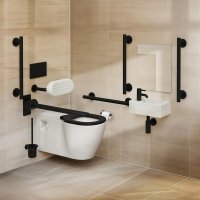
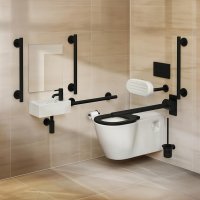
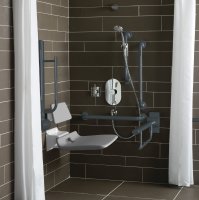
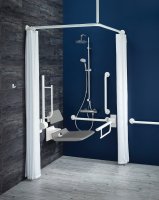


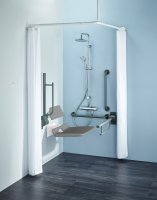

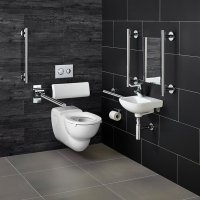


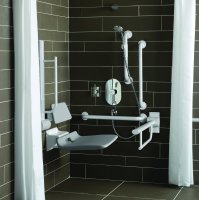

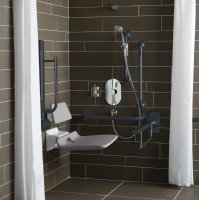

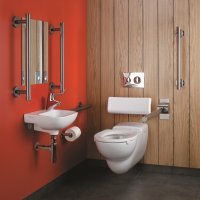
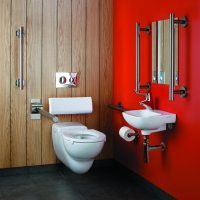
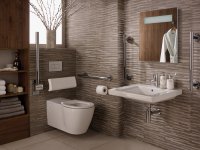

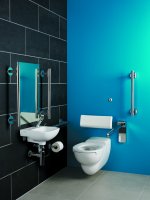
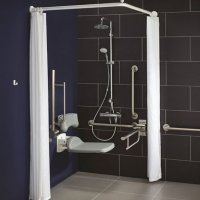











Stay Connected